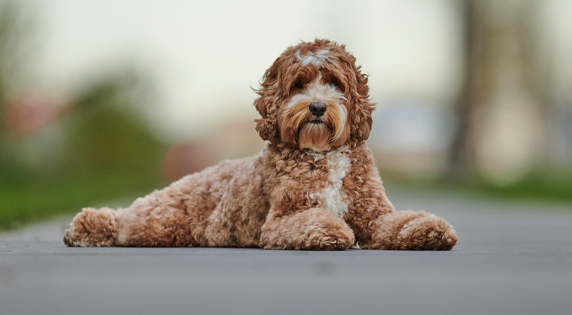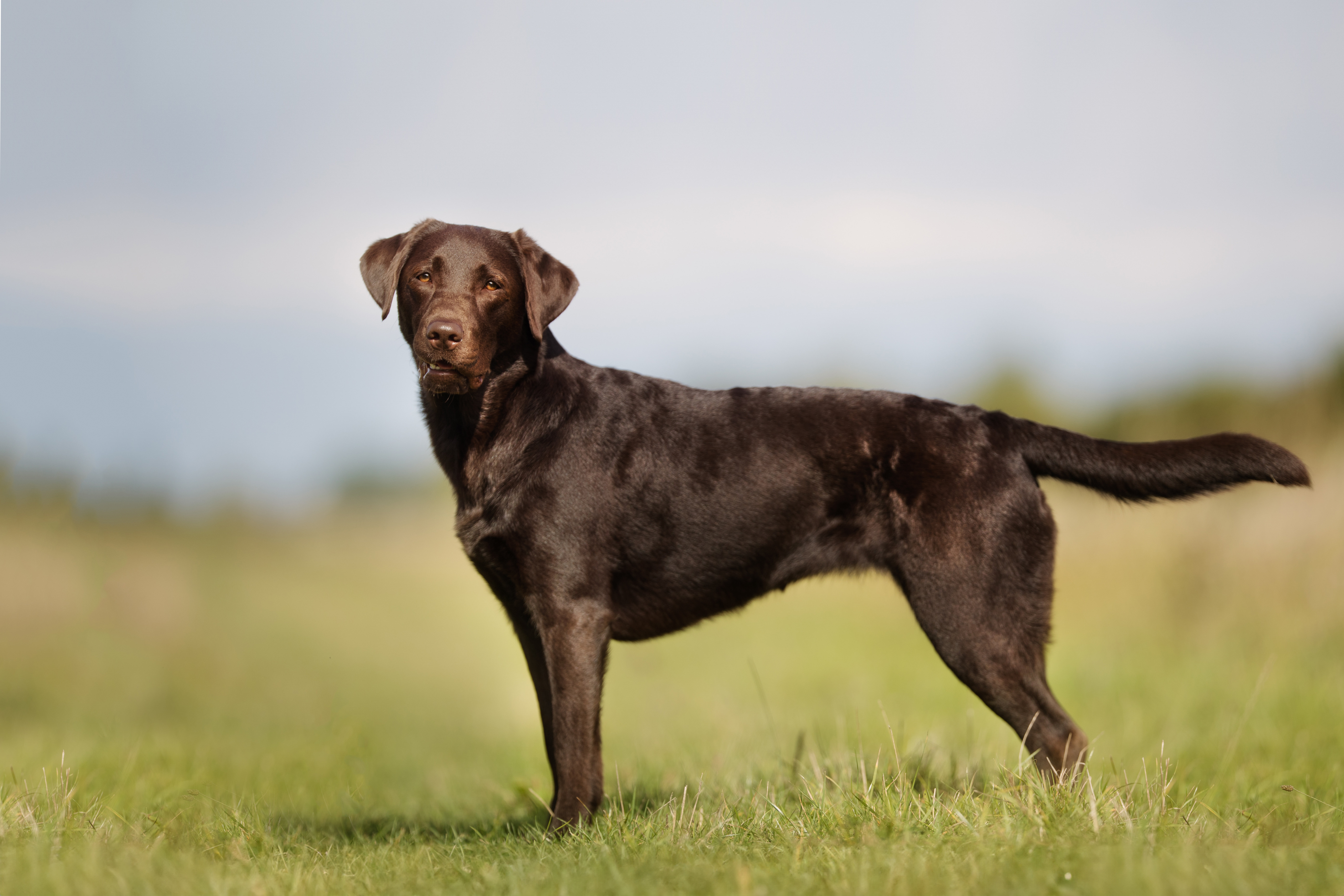
What is the best dog food?
The answer to the above question is subjective and depends on your own preference and that of your dog. We’ve made an overview of the most popular diets in every category, using our extensive range of dog foods.
The Labradoodle is an energetic, intelligent, and friendly dog that is becoming increasingly popular as a family pet. This breed originally resulted from a cross between the Labrador Retriever and the Poodle, with the goal of breeding a hypoallergenic service dog. Thanks to their social nature and smart temperament, Labradoodles are easy to train and true companions to everyone. They love company and are less suited to being alone, making them best suited for an active family. Labradoodles come in various sizes and coat types, ranging from wavy to curly, and their coat typically sheds less than that of other breeds. Despite their reputation as hypoallergenic, not every Labradoodle is suitable for people with allergies. This breed needs plenty of exercise and mental stimulation to stay happy and healthy. With the right upbringing and care, the Labradoodle is a loyal and playful companion for the entire family.

The Labradoodle was developed in the late 1980s in Australia by Wally Conron, a breeder with the Royal Guide Dog Association. He aimed to breed a service dog suitable for people with dog allergies. By crossing a Labrador Retriever with a Poodle, he created an intelligent and socially oriented dog with a hypoallergenic coat. Later, the Australian Labradoodle was developed by including other breeds to further refine its temperament and coat. Today, the Labradoodle is a beloved family dog worldwide thanks to its friendly nature and playful energy.
The Labradoodle is known for its friendly, intelligent, and playful temperament. This breed is social and affectionate, making it a wonderful family pet. Labradoodles are eager to learn and easy to train, which makes them suitable for both novice and experienced dog owners. They are energetic and require plenty of exercise and mental stimulation to feel happy. Additionally, they do not cope well with being alone and thrive on human contact. Thanks to their gentle and patient nature, they are also well-suited as therapy or service dogs.
The Labradoodle has an athletic and well-proportioned body with a sturdy build and a friendly, expressive appearance. Their coat can be fleece-, wool-, or curly-like and comes in various colors such as cream, apricot, chocolate, black, and silver. They have a long neck, a broad skull, and medium-sized, floppy ears. Their eyes radiate intelligence and playfulness, and their tail is often carried cheerfully. Labradoodles vary in size depending on the type and can be miniature, medium, or standard.
The Labradoodle is an active and energetic dog that needs at least 1 to 2 hours of daily exercise. Long walks, play sessions, and mental challenges such as brain games or obedience training help prevent boredom. This breed loves swimming, fetching, and running and enjoys activities that engage them physically and mentally. A Labradoodle that doesn’t get enough exercise may become restless or mischievous.
The Labradoodle needs regular grooming to prevent matting and dirt buildup. Depending on the coat type, brushing is needed weekly to daily, especially for fleece and curly coats. A visit to the groomer every 6 to 8 weeks is also recommended to keep the coat healthy and tidy. Their ears should be checked and cleaned regularly, as they are prone to ear infections. Brushing teeth and trimming nails are also essential to keep the dog in top condition.
Although the Labradoodle is generally a healthy breed, there are some hereditary conditions they may be prone to. Common issues include hip and elbow dysplasia, which can cause joint problems and mobility issues. Patellar luxation (loose kneecap) and progressive retinal atrophy (PRA), an eye condition that can lead to blindness, are also seen. Labradoodles are at higher risk for skin and food allergies, as well as ear infections due to their floppy ears. Regular health checks and proper care help detect and treat these problems early.
There are several breeds that resemble the Labradoodle in character, appearance, and energy level, including:
When buying a Labradoodle, it’s important to do thorough research and choose a recognized and reputable breeder who is committed to the long-term health of the breed. Make sure the breeder conducts health testing on the parent dogs, such as hip and elbow dysplasia, patellar luxation, and eye diseases.
A good breeder will be happy to share information about the puppies’ background, show the parent dogs, and ensure proper socialization. It’s also wise to consider the coat type, as not every Labradoodle is fully hypoallergenic, and some require more grooming. Ask about the temperament of the parent dogs as well, as this greatly influences the puppy’s behavior. Labradoodles are energetic and social, so think about whether you have enough time for their exercise, training, and attention.
It’s always advisable to choose a breeder who breeds with care and responsibility. By being well-informed and careful in your choice, you can welcome a healthy and happy dog into your family.
With its friendly, energetic, and intelligent temperament, the Labradoodle is well-suited for an owner who is active and able to dedicate enough time and attention to the dog’s care, exercise, and training. If you’re considering bringing a Labradoodle into your home, it’s important to know whether its characteristics align with your lifestyle. Below are some points to help you determine if this breed is right for you.
The Labradoodle is a good fit for an owner who:
The Labradoodle is a great choice for active families, sporty owners, or individuals looking for a smart and affectionate dog. This breed does require plenty of time and attention, but gives back lots of love and enthusiasm in return.
Thanks to its friendly and eager-to-learn nature, the Labradoodle is suitable for both first-time and experienced dog owners. However, there are a few things to consider. Beginners will find the Labradoodle to be a pleasant dog because it is trainable and social. That said, this breed demands a lot of attention, including sufficient exercise, mental stimulation, and coat care. An owner willing to invest time in training and raising the dog will build a strong bond with their companion.
Experienced owners will appreciate the Labradoodle’s intelligence and versatility. This breed is ideal for people who enjoy being active with their dog and want to train for dog sports, tracking, or agility.
The Labradoodle is a wonderful dog for anyone who can invest time, energy, and love into its upbringing and well-being. Both novice and seasoned dog owners can enjoy this playful and loyal breed, as long as they meet its needs.

The answer to the above question is subjective and depends on your own preference and that of your dog. We’ve made an overview of the most popular diets in every category, using our extensive range of dog foods.

This blog article discusses 10 commonly kept medium-sized dog breeds with the most important characteristics associated with these breeds. Dogs in this category have an adult weight between 10-25 kg. This is our top 10 medium dog breeds. Looking for a different breed? Check out our dog breeds page.

If you've ever owned a dog, you'll know that every dog is unique. Dogs can have breed-specific characteristics, though, like joint or coat issues. To support these specific characteristics, Royal Canin has created special nutrition that meets the needs of individual dog breeds. Read all about breed-specific dog food in this article!

Add products to view your basket
We use cookies to help us serve you better and more personally. Functional cookies ensure that the website works properly and have an analytical function. We also use technology to track your behaviour anonymously, both inside and outside our website. Personal data and cookies may be used for personalisation or advertising. Want to know more? Read our privacy policy and cookie statement here. If you choose to reject, we will only place functional and analytical cookies.
